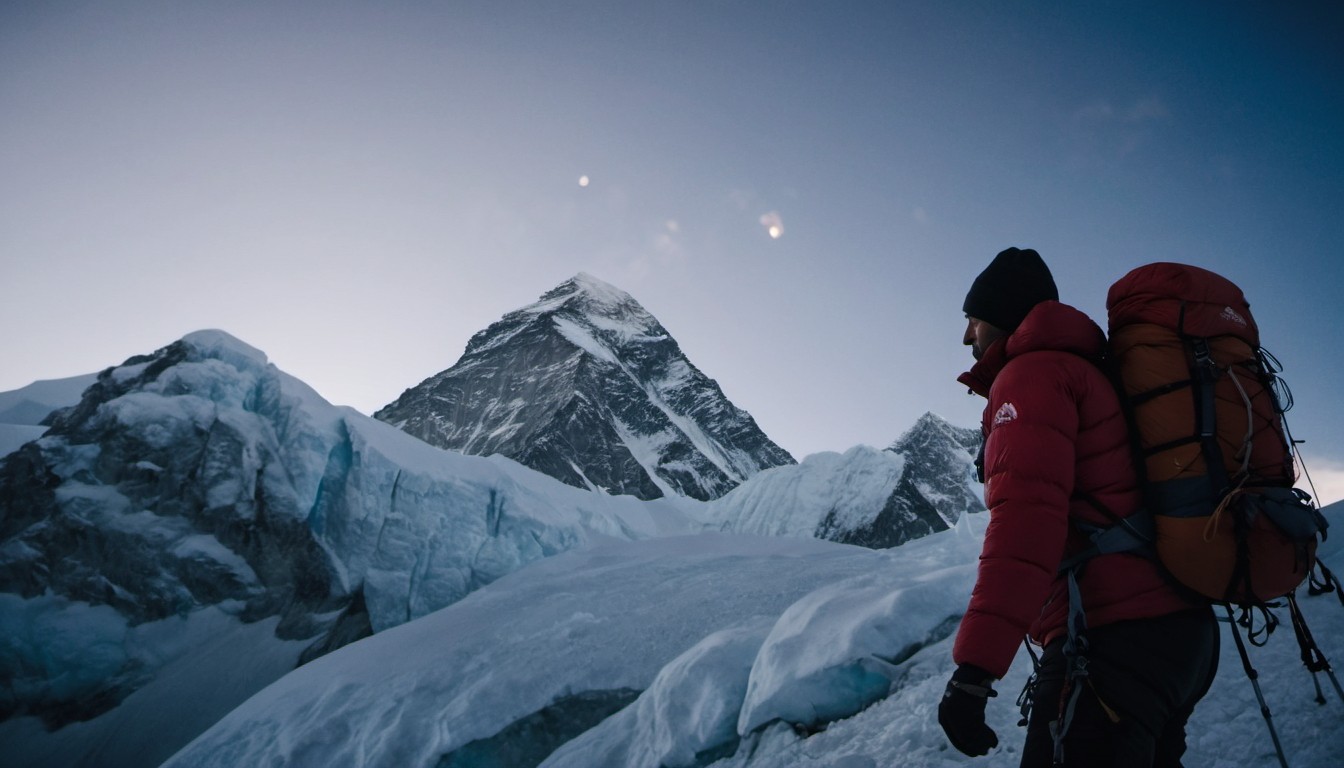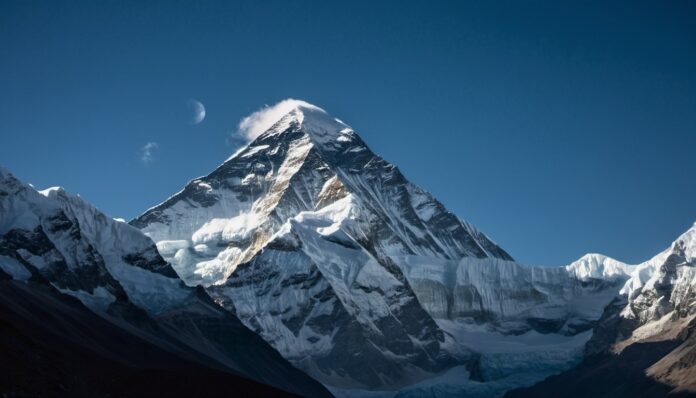Mount Everest is the highest mountain in the world, standing tall in the Himalayas. It has fascinated and challenged people for many years. Let’s learn more about this incredible natural wonder.
Location
Mount Everest is located on the border between Nepal and the Tibet Autonomous Region of China. It is part of the Himalayas, a massive mountain range that spans five countries: India, Nepal, China, Bhutan, and Pakistan.
Height
Mount Everest’s official height is 8,848 meters (29,029 feet) above sea level. This measurement was confirmed in 1955 by an Indian survey and is still widely accepted today.
Naming
The mountain has different names in different languages. In Nepal, it is called “Sagarmatha,” which means “Forehead of the Sky.” In Tibet, it is known as “Chomolungma,” which means “Mother Goddess of the World.” The English name “Everest” was given in honor of Sir George Everest, a British surveyor-general of India.
First Ascent
The first successful ascent of Mount Everest was on May 29, 1953, by Sir Edmund Hillary of New Zealand and Tenzing Norgay, a Sherpa of Nepal. Their historic climb opened the doors for many other climbers to attempt the summit.
Climbing Challenges
Climbing Mount Everest is not easy. It presents many challenges, such as:
- Extreme Weather: Temperatures can drop to -60°C (-76°F), and storms can be severe.
- High Altitude: The air is very thin at the top, making it hard to breathe without supplemental oxygen.
- Physical Strain: The climb is physically demanding and requires a high level of fitness and preparation.
Climbing Routes
There are two main routes to the summit of Mount Everest:
- The South Col Route: This route is from the Nepal side and is the most popular and frequently used path.
- The North Col Route: This route is from the Tibet side and is known for being more challenging due to harsh weather conditions.
Sherpas
Sherpas are the indigenous people of the Himalayas and are renowned for their climbing skills and knowledge of the mountains. They play a crucial role in expeditions, assisting climbers by carrying supplies, setting up camps, and guiding the way.
Interesting Facts about Mount Everest
- Everest is still growing: The mountain grows about 4 millimeters (0.16 inches) per year due to geological activity.
- It has its own jet stream: The peak of Mount Everest can experience jet stream winds exceeding 200 mph (322 km/h).
- The death zone: Above 8,000 meters (26,247 feet) is known as the death zone, where the oxygen level is insufficient to sustain human life for long periods.
- Most dangerous spot: The Khumbu Icefall is considered the most dangerous part of the climb, with shifting ice and crevasses.
- Record holder: The youngest person to reach the summit is Jordan Romero, who was 13 years old in 2010.
- Most ascents: Kami Rita Sherpa holds the record for the most ascents of Everest, with 24 successful climbs as of 2019.
- Animals on Everest: The Himalayan tahr and snow leopard are some of the few animals that live at high altitudes near Everest.
- Everest’s shadow: The mountain casts a massive triangular shadow during sunrise and sunset, which can be seen from far away.
- Air traffic: Mount Everest is in the flight path of planes traveling from Kathmandu to Lhasa, giving passengers a stunning aerial view of the peak.
- Frozen remains: The bodies of climbers who have died on Everest often remain on the mountain, frozen in place due to the extreme conditions.
Mount Everest, the highest mountain in the world, stands as a symbol of human ambition and the spirit of adventure. Its towering height, challenging conditions, and rich history continue to inspire climbers and adventurers from all over the globe. Despite the challenges, many people dream of standing on its summit, looking out over the vast expanse of the Himalayas.
